
Acai, asai, asaí or açaí(Euterpe precatoria Mart and Euterpe oleracea Mart) is a palm native to the Amazon rainforest of South America, widely distributed in the natural floodplains of the Brazilian, Peruvian, Ecuadorian, Bolivian, Colombian and Venezuelan Amazon(Balick, L. 2008). It is easily identified by its long, slender stem and its crown of thin, flexible, curtain-like leaves.
Other names of asai
They call it palmito (Ecuador), asai, asaí, acai (Colombia), asaí (Bolivia), manaca, palmito, morroke, úassi, morroke (Venezuela), acaiaçaí, assaí, açaizeiro, açaí-do-Pará, açaí-da-várzea, açaí-do-baixo-Amazonas (Brazil). Manicole (Guyana), pina, pinau (Suriname), palisade pine, prasara, manaka, wasei, wapoe (French Guyana) Manac (Trinidad)
Acai Products
It is a very useful palm, its berries are used as a source of food and its trunk for construction, in addition, this palm is used by indigenous communities for medicinal purposes (Balslev et al., 2008). The heart of palm was initially the basis of its production and is the most appreciated among the Amazonian palms, being extracted at first from Euterpe edulis.
Today, palm heart extraction is limited to the Euterpe oleracea Mart species, which accounts for 99% of the total.
This is due to the fact that in both the case of the solitary asai(Euterpe precatoria) or of the species juçara(Euterpe edulis)In the case of palm heart, the extraction of palm heart causes the death of the palm tree, while in the case of the acai de touceira (Euterpe Oleracea Mart)Due to the existence of 4 to 9 trunks per group, palm heart extraction is possible without causing damage to the plant, thus allowing its total and sustainable use.

Biólogo – Universidad de Oriente – núcleo de Sucre. Venezuela (2013). Profesora de Biología hasta el 2018 de la Universidad de Oriente – núcleo Bolivar. Certificada en gestión de calidad e inocuidad alimentaria ISO 22000 y gestión de la calidad en laboratorios ISO 17025. Actualmente vive en Ecuador. Senescyt Nro. 8622122546
The açaí fruit in Amazonian gastronomy
The fruit of the asai, acai, asaí or açaí, which is a rounded berry that is commercially attributed with a number of properties, is used as an ingredient for the preparation of beverages Y typical dishes of the amazonian gastronomyThe fruit is used to prepare juices, smoothies and desserts, in addition to the famous acai wine (Neida, S. and Elba, S. 2007).
Asai wine
This wine is prepared by macerating the juicy pulp of the ripe fruits with the thin, edible acai peel, obtaining a viscous wine, purple to reddish in color, with its characteristic chocolate flavor.
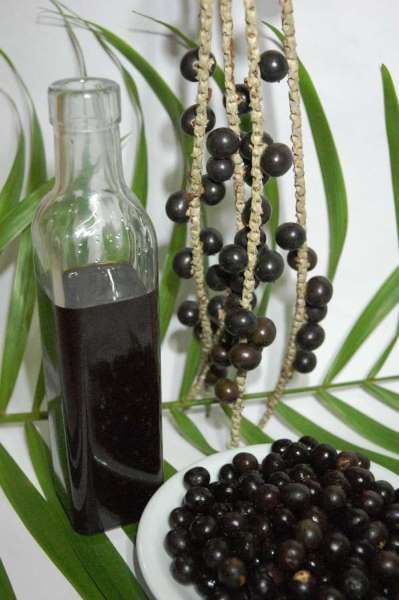
However, defining the flavor of açaí is a bit complicated.
The inhabitants of Pará in northern Brazil, one of the regions with the highest acai production, cannot live without the juice of this fruit.
The table may be set with roasts, salads, fish or barbecue, but without asai, it’s not exactly a banquet. According to Murrieta, R., Dufour, D. and Siqueira, A. 1999 in FAO, in some Amazonian Cabocla communities, acai or asaí represents 42% of the daily food intake by weight.
Benefits of acai
The acai fruit or acai has exceptional properties for the prevention or treatment of different health problems, such as cancer, cardiovascular diseases, overweight and obesity, weakness and excessive fatigue, sexual dysfunction, and its high antioxidant, anti-inflammatory, and anti-aging activity makes it considered as a “natural” antioxidant.superfruit“and is in great demand globally.
The acai market is in full development and has been quite successfully positioned in countries such as the United States, Europe, Japan and Brazil, the latter being the largest producer of the fruit and the world’s leading exporter in its presentation as fruit pulp, and the United States being the largest importer of acai fruit pulp and derived products, importing close to US$ 109 million in 2008. Since 2006, asai has been positioned in the U.S. and European markets as a “superfood“.
According to scientific research conducted by the Department of Food Science and Human Nutrition at the University of Florida (USA),Acai has been recognized as a food that can be used in “nutraceutical” products due to the wide range of functional properties attributed to it .
Acai or asai and its effect on health / properties and benefits
The Department of Pharmacology and Psychobiology of the University of Rio de Janeiro (Brazil) has verified the richness of polyphenols (anthocyanins and flavonoids, mainly), substances found in foods that have antioxidant actions (Lichtenthaler, R. et al., 2004) (Pacheco-Palencia, L., Duncan, C., and Talcott, S. 2009).
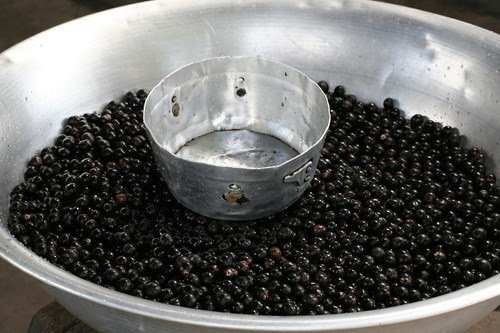
Foods with the highest amount of proanthocyanins have protective antioxidant effects for health (Hassimotto et al., 2009) generating multiple benefits, among the most important ones attributed to acai:
- The anti-inflammatory effect
- It is anticarcinogenic
- Helps control blood sugar
- Lowers cholesterol
- Antibiotic
- Helps prevent Alzheimer’s disease
- Combats urinary tract infections
- Protects vision
- Maintains healthy circulatory system
- In addition, it prevents osteoporosis due to its significant contribution of calcium, among others.
Antioxidant effect
In a comparative study of anthocyanin content between Asai and blueberry a result of 1289mg/100 g dry weight was obtained in acai compared to 255.8mg/100 g dry weight of blueberry, these results conclude that the first fruit may have a greater impact in the prevention and treatment of various diseases.
Regarding antioxidant content, antioxidants are natural substances or substances produced by the human body that help prevent or slow oxidation and damage to cells in the human body.
Its quantification is given by ORAC (oxygen radical absorbance capacity) which is a way of measuring how antioxidant a compound is. Comparing the data obtained for antioxidants from different fruits, the antioxidant content measured in ORAC of asai is 610 equivalent to 6 times higher than cranberry which is 94, this being the closest fruit (Natural, 2013).
Anti-aging and cancer effects
Research in terms of ORAC and phenolic concentration shows that the antioxidant strength of acai is the best known, surpassing the nearest food with 300%.
Thus, this fruit was rated 8 out of 10 in nutrient density and diversity and was the only fruit to receive a 10 in the antioxidant category.
According to recent studies, carried out by the “Journal of Agriculture and Food Chemistry” or the “International Journal of Food Sciences and Nutrition”, it has been demonstrated the effective capacities it possesses against free radicals such as peroxide and su peroxide, which are toxic particles that in the long run generate diseases and cell mutations. This suggests that it has health benefits.
When free radicals come into contact with important components of cells and fat molecules, proteins or DNA, they damage them, thus causing disease. The antioxidants in acai are able to enter human cells, thus preventing the acquisition of disease-causing free radicals.
Leukemia remedy
In this regard, laboratory research found that acai fruit extract started a self-destructive reaction in up to 86% of leukemia cancer cells, although these effects have yet to be tested in humans (Del Pozo-Insfran, D., Percival, S. and Talcott, S. 2006).
Cardiovascular and immune system benefits
The Institute of Nutritional and Food Sciences at the University of Bonn (Germany) has discovered the contribution of anthocyanins, which are bluish, dark red or purple pigments that have properties to restore the health of eye capillaries, support the immune system, and have hemostatic properties.
Studies have demonstrated its vasodilator effect in the circulatory system of rats, which has led to research on whether this fruit could help overcome cardiovascular problems by improving blood circulation, in addition to its significant contribution of polyunsaturated fatty acids that help reduce cholesterol and therefore prevent the formation of fatty plaques in the arteries (Silva Do Nascimento, R. et al., Bras. 2008).
Combats stress and anxiety
It helps reduce cortisol levels, which is a hormone better known as stress hormone thanks to its polyunsaturated fatty acids of the omega 6 and 9 type.
Boosts sexual appetite
In men it increases sex drive due to its high energy content, confers vitality and can help increase libido.
In Pará it is considered an aphrodisiac and is known as a natural viagra, it also prevents prostate hyperplasia.
Regulates appetite and constipation
In a quantitative and qualitative analysis of the nutrients and antioxidant power of the fruit, it is recognized as an exceptional source of polyunsaturated fats and dietary fiber, its energy supply regulates appetite and its 40% prebiotic fiber content relieves constipation symptoms.
Acai or asai for weight loss
Antioxidants accelerate the digestion process, which helps to burn saturated fat that the body does not need, and the fiber intake naturally reduces appetite.
By stabilizing blood sugar, it also keeps energy levels stable. This favors the reduction of body fat and avoids insulin peaks that can turn into fat tissue due to excess blood sugar.
Asai for skin
The high levels of antioxidants provide wonderful benefits to the skin, contributing their properties and preventing problems.
Among its properties we can mention: it is rejuvenating, since it fights free radicals, protects us from sun exposure and delays the effects of aging due to its stimulation of collagen production and its content in omega 3, 6 and 9.
It is also rich in vitamins E, C and B, making it a real beautifying cocktail that protects the skin and hair.
Asai for hair
Acai is considered a nutricosmetic thanks to its high content of essential fatty acids: Omega-3, Omega-6 and Omega-9, (powerful hair regenerators) and anthocyanins with antioxidant effect that prevents premature aging of the hair, improving its flexibility, softness and shine. In addition, it repairs and restructures the hair from the inside, nourishes and moisturizes and has an anti-aging effect.
Meaning of the word acai, asai or açaí
The word acai (pronounced asaí) comes from the Tupi-Guarani language (native people of South America) and means “fruit that cries“.
Mythical origin of the name
The acai has long been an important food source for the indigenous peoples of the Amazon region, its name comes from a legend where a chief finds his daughter hugging this palm with purple fruit and sends to prepare acai juice to distribute to his tribe saving it from the terrible famine that was going through, so the acai was baptized in this way by the name in reverse of his daughter.
Acai taxonomic classification
Acai is a predominantly tropical and subtropical palm tree. It belongs to the Arecaceae family, which includes over 200 genera. According to Cronquist’s (1981) classification it is ordered as follows:
- Kingdom: Plantae
- Division: Tracheophyta
- Class: Magnoliopsida
- Order: Arecales
- Family: Arecaceae
- Gender: Euterpe
- Species: Euterpe precatoria
Açaí description
Acai is an Arecaceae palm, monoecious, whose fruits form green clusters during the immature stages and dark purple when fully ripe.
The predominant local species in terms of exports in Brazil, is Euterpe oleracea Mart, a multi-stemmed palm that reaches heights of more than 25 meters, which is known as “Asai-do-pará” because it is found in the estuary of the Amazon River in the state of Pará (Brazil). harvest is between July and December.

Source: Dick Culbert from Gibsons, B.C., Canada[CC BY 2.0].
For its part Euterpe precatoria Mart, a single-stemmed palm reaching a maximum height of 22 meters, is the least available species and is known as “Asai-do-terra- rma”; it is found in the central and western regions of the Brazilian Amazon and is harvested between December and August.
Acai cultivation
Acai palms regenerate easily in the seasonally flooded forests of the Amazon River estuary where seeds are frequently spread by people, animals and water.
This species is cultivated in the mainland forests by planting seedlings. Seeds germinate quickly (in 30-40 days in humid conditions) and in four to five months (at 30 cm in height) they are ready to be transplanted.
In its natural environment, the germination percentage is less than 50% of the seeds. Light is the main requirement for rapid growth.

Açaí-Palme(Euterpe oleracea) in the garden of Palácio Lauro Sodré in Belem (Brazilien)
In estuarine floodplains, acai agroforestry systems are characterized primarily by planting seedlings on agricultural land after planting annual or biennial crops or by managing native floodplain forests, or by a combination of both systems (Brondizio, E. 2008).
Once planted, it is estimated to grow 2 meters per year and a production period of 4 – 6 years.
On the other hand, it is estimated that 90% of the marketed fruits are from native extraction, compared to 10% of fruits grown on land (Gerais et al., 2016).
Disadvantages of acai cultivation
At the same time, this crop has a number of disadvantages to consider. It is a highly perishable product, requiring rapid transport from the harvesting area to the commercialization centers or processing industries, avoiding a transit time of more than 12 hours in order to maintain its innocuousness.
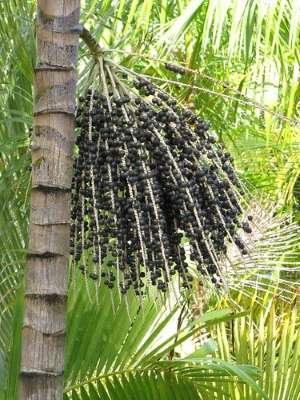
Due to the remoteness of the raw material from the processing centers and the need for speedy arrival, transportation costs are high. On the other hand, there is another limitation, the scarcity of labor, since it is harvested in the traditional way, by climbing the palm trees.
What is acai and what is it used for?
The industrialization of the acai fruit from the use given to it by the inhabitants of the Amazon rainforest and the added value that Brazilian industrialists give it allows us to know the great potential of this species, according to the FAO it is attributed the following uses:
– Uses of the fruits:
They are used for the manufacture and sale of frozen pulp, jelly, powder, pigments and juice. Acai fruit can be of two qualities: medium and premium. The medium quality berry or fruit contains much more water than the premium one, obtaining a higher yield of the latter when freeze-dried.
– Uses of palm heart:
The heart of the palm is eaten fresh or frozen.
– Uses of the leaves:
Used in the manufacture of roofs for houses, baskets, carpets, fans and ropes for climbing trees. They are also used as fertilizer and animal feed. The spathe that covers the bunches is used for the manufacture of toy boats and hammocks.
– Seeds: used as fertilizer and when dried they are used to make jewelry.
– Trunk:
It is used as a pillar in the construction of the settlers’ houses and for the elaboration of bridges over streams.
– Young roots:
As an anthelmintic medicinal tea mainly to combat worms. They also have a high concentration of phenolic compounds, identified as the compounds responsible for the antioxidant activity.
– Fruit stalk:
It is used as fertilizer or to make garden brooms. It is also used as a mosquito repellent if burned.
Açaífruit
It is a round or oval shaped berry. Each acai berry contains a large light brown seed, which represents 90% of the diameter of the fruit and accounts for more than 90% of its weight.
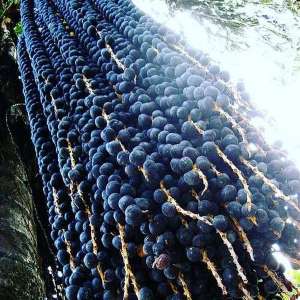
Each seed is covered with a layer of fibers or pulp about 0.5- 1.5 mm thick, which corresponds to the edible mesocarp, and on top of it there is a thin and smooth edible purplish layer called epicarp, both parts represent 10% of this fruit (Sabbem, S. 2009. Rogez, H. 2000. Pompeu, D. 2000).
On the plant, the fruits are grouped in purplish clusters when ripe, although there is also a lesser known white variety (Lichtenthäler et al., 2005). The fruits of Euterpe oleracea Mart are between 1.0 and 1.4 cm in diameter, while those of Euterpe precatoria Mart are larger, reaching diameters of up to 1.8 cm (Pacheco-Palencia, L., Duncan, C. and Talcott, S. 2009).
Once harvested, they last between 36 and 48 hours without refrigeration. In areas where they cannot be sold due to long distances to markets, a good alternative may be to develop a management plan. The most abundant and commercially explored species is Euterpe oleraceae Mart or touceira açaí, representing 98% of the fruit production (Pereira, A. Año).
The fruit of this species of acai has a very pleasant taste and is a food with many health benefits for humans. Its great richness in flavonoids gives it the dark lilac tone that characterizes the fruit and produces a high amount of antioxidants, exhibiting mainly antiproliferative and cardioprotective properties (Del Pozo-Insfran, D. 2004).
Acai or asai Nutritional Value according to FAO
Acai juice contains minerals such as iron, calcium, phosphorus, and vitamin B1 (thiamine). Its vitamin A content is higher than that of many other tropical fruits. An amount of 100 grams of açaí contains 2.0 grams of protein, 12.2 grams of lipids, 11.8 grams of iron, 0.36 grams of thiamine and 9.0 milligrams of vitamin C.
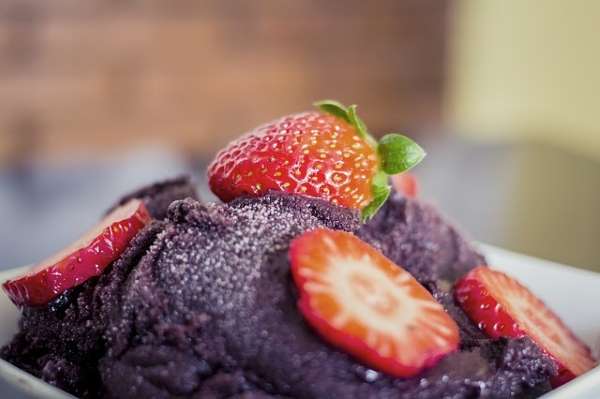
Image by Stefano Escandiussi stecks05 at Pixabay
The amount of (vegetable) protein contained in the acai fruit is similar to that found in milk. The acai contains few calories, but has a significant amount of minerals such as potassium, sodium, copper, silicon and magnesium.
Small amounts of vitamin E can also be found, as well as aspartic acid, glutamic acid, fatty acids similar to those found in olive oil and avocado, Omega 3, 6 and 9 and other phenolic compounds and antioxidants (Nascimento, R. 2009).
In summary, each 100 g of Açaí Pulp contains:
| Quantity/100 g | % of daily intake | |
| calories | 80 | – |
| Total fat | 6 g | 9 |
| Saturated fats | 1,5 g | 7 |
| Omega 6 | 860 mg | – |
| Omega 9 | 3,360 mg | – |
| Cholesterol | 0 mg | 0 |
| Sodium | 10 mg | 0 |
| Total carbohydrates | 7 g | 2 |
| Fibers | 1 g | 5 |
| sugars | 0 g | – |
| Protein | 2 g | – |
| IronVitamin A | 15% | |
| Vitamin C | 8% | |
| Calcium | 4% | |
| Iron | 6% |
Açaí calories
The edible part or pulp of the unprocessed fruit has a high energy value of approximately 247 – 262 kcal/100g, while once industrialized, it is reduced to 80 kcal/100g since the pulp extracted depends on the amount of water added during processing (Alves, R. et al., 2000).
Acai products
The extract of this berry, as well as in its frozen pulp presentation are the two forms in which the asai has currently become popular in the market, since the fruit deteriorates quickly and that makes it difficult to sell in its natural state, however you can find a variety of products of this superfruit, such as:
- Acai essence (alone or combined)
- Lyophilized powder
- Concentrated asai beverages
- Powdered vitamin preparations
- Syrup based on acai
- Herbal infusions containing acaí
- Energy drinks containing acai
- Acai-based perfumes and colognes
- Hand and body creams and facial masks
- creams, shampoos and other hair preparations based on acai
- Deodorants based on asai
- The soaps made from acai
- Green tea with açaí
Where to buy?
It is a delicate fruit and cannot be transported and sold fresh outside Brazil. The best option is to buy it in powdered form, dehydrated through a freeze-drying process. Now, this product in its presentation of frozen pulp and other presentations can be obtained from supermarkets or nutrition centers in regions as far away from its place of origin as Europe, Australia, Asia or online for example in Amazon.
Acai prices
Açai prices and quantities consumed have increased significantly in recent years. In 1995, a 14 kg basket of açaí in Belem cost between US$1 and US$5, a fraction of its current price. In April 2003, the same basket of fruit was selling for US$4, and in April 2008, due to the increase in the national and international market, its price was around US$30. However, this is not the reality for most.
Producers in the State of Amapá, who harvest açaí out of season for Pará, are increasingly sending products to Belem and surrounding regions (FAO). Acai products are available from $13.95 for 8 ounces of organic acai berry powder to $14.89 for 100g, or $1.98 for a 300ml acai berry drink.
Acai bowl (Smoothie Bowls)
The acai bowl is a preparation that includes the acai fruit, which is perfect for breakfast and is prepared using frozen or powdered acai, this is processed in a blender with water or if you prefer mixed with vegetable milk preferably coconut or almond milk.
It is very common to accompany the smoothie with a sweet fruit, preferably also frozen, such as banana, papaya, mango or blueberries, strawberry, blackberry, blackberry or kiwi.
This slush is placed in a bowl and add the toppings of your choice, for example you can use granola, nuts, shredded coconut and other chopped fruit slices, you can also sweeten with honey for a nutritious and very healthy personalized breakfast .
Something that characterizes the acai bowl is its consistency, since, when mixed in powder or juice form, it acquires a smooth shape like ice cream, so it is also known as Smoothie Bowls.
The reasons why this type of food is so highly recommended is that acai has nutraceutical properties that include large amounts of vitamins A, E and C.
It also contains magnesium, zinc, proteins and antioxidants that will help you stay healthy.
Plus the unlimited combinations of fruits and cereals make for a balanced breakfast you can’t get enough of.
Acai recipes
According to the macrobiotic diet, different combinations can be used to prepare delicious and nutritious breakfasts with Acai Bowl .
Açai bowl green
A variation of the traditional acai using frozen açai, kale leaves, avocado, chopped and frozen banana and coconut milk. After transferring this preparation to our bowl, it is complemented with mango and kiwi slices, diced strawberries, granola and poppy seeds.
Açai bowl red
This recipe is prepared using our frozen acai base, bananas and red fruits such as frozen sliced strawberries, frozen blackberries, cherries and blueberries, and almond milk. for the garnish, blueberries, blackberries, shredded coconut, chopped peanuts and spirulina are used.
Açai bowl yellow
The yellow variant uses frozen açai slush, frozen chopped mango, frozen blueberries and almond milk. which after being served in a bowl is decorated with a garnish of yellow fruits such as mango slices, pineapple cubes, banana, peach, shredded coconut and granola.
Source: https://www.lekue.com/es/blog/acai-bowls-5-recetas-desayunar/
Açai bowl with chocolate
The ingredients for this delicious recipe are 1 package of frozen Acai pulp, 5 tablespoons of cocoa powder, ½ cup of vegetable milk, 3 frozen bananas, 2 tablespoons of peanut butter. Put the cocoa powder, vegetable milk and peanut butter in the blender and blend to integrate these ingredients. To decorate use chia seeds, chocolate chips, banana slices and nuts.
Source: https://www.recetasgratis.net/receta-de-smoothie-bowl-de-chocolate-y-platano-61380.html
Açai bowl for children
For one person this preparation requires one package of frozen acai pulp, 2 frozen bananas, 2 dates to sweeten, cinnamon to taste, 2 tablespoons of activated sesame seeds, vegetable milk to taste. process all these ingredients in the blender, then in the bowl add topping of sliced almonds, oatmeal, raisins and strawberries.
Source:https://youtu.be/nuUM8aAOfbg
Acai berry contraindications
It should be noted that there are very few conditions in which acai causes negative effects, however, it can be mentioned that it is not recommended for:
People who suffer from insomnia, since acai is a very powerful natural energizer, it can become an aggravating factor for those who have a hard time sleeping.
For those undergoing chemotherapy and radiotherapy treatment, there is some evidence that the consumption of acai interferes with the positive action of these treatments due to the amount of antioxidants it contains, so it is recommended to consult a specialist if this is the case.
It is also not recommended for people prone to suffer allergies, as these berries are susceptible to produce allergies, to which should be acted immediately.
Bibliography:
- Alves, R.E.; Filgueiras, H.A.; Moura, C. F. L (Coords. ) 2000. Characterization of Native Fruits of Latin America. series 9. Source
- Balick, M. J. 1988. The Use of Palms by the Apinayé and Guajajara Indians of Northeastern Brazil. Advances in Economic Botany, New York, n. 6. p. 65-90. PDF
- Balslev, H., Grandez, C., Paniagua, N. , Moller, A. and Hansen, S. Useful palms (Arecaceae) near Iquitos, Peruvian Amazon. Rev Peru Biol. 2008;15(1 suppl):121-132. Source
- Brondizio, E. 2008. The Amazonian caboclo and the Açaí Palm: forest farmers in the global market. New York: N. Y. Botanical Garden Press. 402 pp. Source
- Del Pozo-Insfran, D., Brenes, C. and Talcott, S. 2004. Phytochemical composition and pigment stability of açaí (Euterpe oleracea Mart.) Journal of Agricultural and Food Chemistry, 52, 1539-1545. 42. Source
- FAO. Palms and many other species. Fruit trees and useful plants of the Amazon. Pag. 157-169. PDF
- Gerais, Minas. 2016. United States, Panorama Nacional Segundo, Desenvolvimento Agropecu, and Pesca- Sedap. “Açaí Setembro 2016 CONAB.” 1-6. PDF
- Lee, R. and Balick, M. 2008. Palms, people, and health. Explore. 4(1):59-62. 8 Source
- Lichtenthaler, R., Belandrino, R., Maia, J., Papagiannopoulos, M., Fabricius, H. and Marx, F. 2005. Total antioxidant scavenging capacities of Euterpeoleracea Mart (Asai). Int. J. Food Sci. Nourish 56(1):68-75. 9 Source
- Nascimento, R., Couri, S., Antoniassi, R., and Pereira, S. 2008.Composiçaoem ácidos graxos do o leo da polpa de Açai extraído com enzimas e com hexano. Rev Bras Frutic. 30: 498-502. 15. Source.
- Natural Sourcing LLC. INCI: Acai (Euterpe oleracea) Pulp Oil [Internet]. Acai Berry Oil. 2013. PDF
- Neida, S., and Elba, S. 2007. Characterization of Açaí or manaca (Euterpe oleracea Mart.): a fruit of the Amazon. Archivos latinoamericanos de nutrición, Vol. 57, Nº 1. Source
- Murrieta, R., Dufour, D. and Siquiera, A. 1999. Food consumption and subsistence in three caboclo populations on Marajó Island, Amazonia, Brazil. Human Ecology, New York, v. 27. Source
- Pacheco-Palencia, L., Duncan, C. and Talcott, S. 2009. Phytochemical composition and thermal stability of two commercial Asai species, Euterpeoleracea and Euterpepre- catoria. Food Chem. 115(4):1199-205. 14. PDF
- Pompeu, D. , Silva, E. and Rojez, H. 2009. Optimisation of the solvent extraction of phe- nolic antioxidants from fruits of Euterpeoleracea using Response Surface Meth- odology. Bioresource Technology. 100(23):6076-82. 32. Source
- Rogez, H. 2000. Asai: preparation, composition, preservation improvement, 1st ed. Edufpa, Belem Brazil 31. Source
- Sabbe, S., Verbeke, W., Deliza, R. ,Matta, V. and Van Damme, P. 2009. Effect of a health claim and personal characteristics on consumer acceptance of fruit juices with different concentrations of Asai (Euterpeoleracea Mart.). Appetite. 53:84-92. 7 PDF
- Schauss, A. , Wu, R., Ou, B., Patel, D., Huang, D. and Kababick, J. Phytochemical and nutrient composition of the freeze-dried Amazonian palm berry Euterpeoleracea Mart (Asai).J. Agric. Food Chem. 2006; 54(22):8598-8603. 10 Source.
- Silva Do Nascimento, R., Couri, S., Antoniassi, R. and Pereira Freitas, S. 2008. Composition of fatty acids in acai pulp oil extracted with enzymes and hexane. Ver. Bras. Frutic. 30 (2):498-502. 9. Source
- Sotero, V., Maco, M., Merino-Zegarra, C., Vela, E., Dávila, E. and García, D. Chemical characterization and antioxidant evaluation of fruits and roots of Euterpe oleracea and Euterpe precatoria. Rev. Soc. Quím. Peru [online]. 2013, vol.79, n.3, pp.236-242. ISSN 1810-634X. PDF
- Taiz, L. Zeiger, E. Plant Physiology. Volume 1. 3rd Edition. Spain. Publi- cation of the University of Jaume Castellón de la Plana. 2006.. 40. PDF
Related Posts
January 22, 2020

3 scientific studies on ayahuasca
December 21, 2019
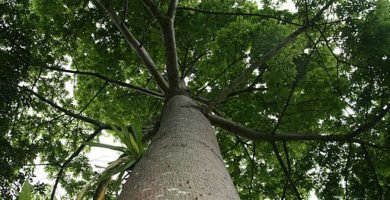
🥇 The Great Amazonian Legend
December 9, 2019
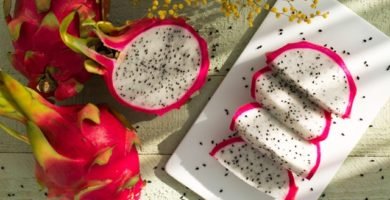
Dragon Fruit Benefits – The healthy power of Pitayas
November 25, 2019
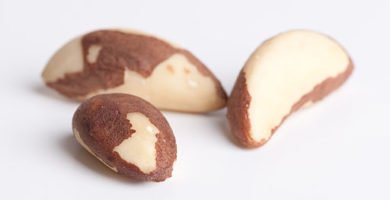
Brazil Nut (Bertholletia excelsa)
October 28, 2019
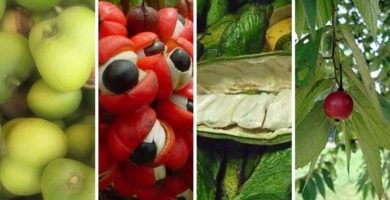
7 medicinal fruits of the Amazon Rainforest
October 5, 2019

Amazonian fruits – Jungle Fruits and Super Food
February 7, 2020

Guayusa: from God of fertility to energy drink
February 5, 2020
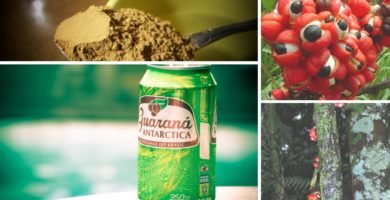
Guarana: (Paullinia Cupana), Drink, Fruit, Origin and Sexual Benefits
This post is also available in:
![]() Español (Spanish)
Español (Spanish)
